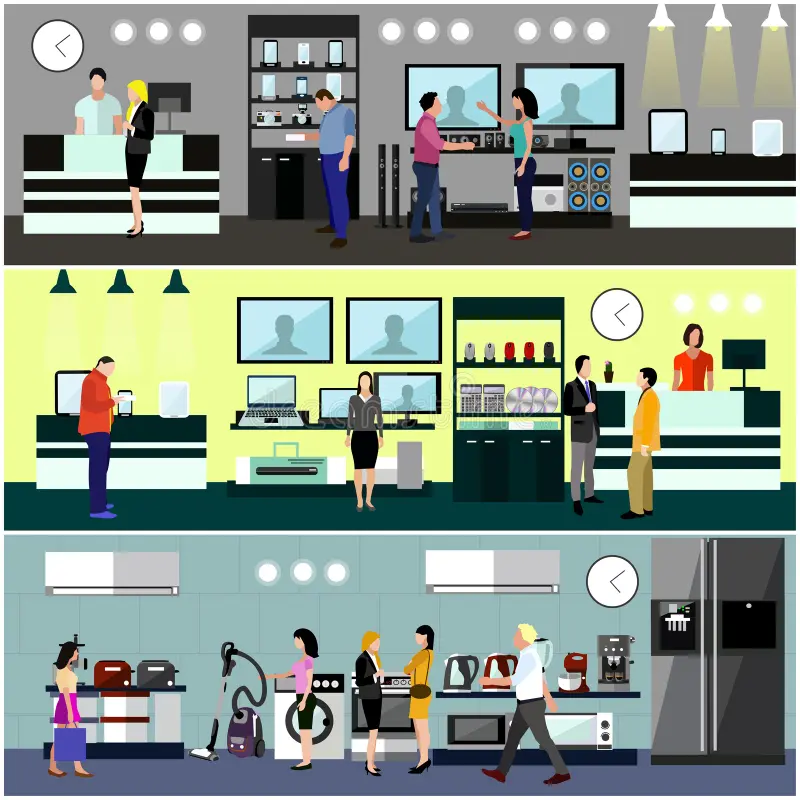Behind the Screens: The Creative Minds of Consumer Electronics Designers

An Introduction to the World of Consumer Electronics Design
Enter the interesting world of consumer electronics design, where technology and creativity come together. Think about how sleek smartphones, smart home technologies, and cutting-edge wearables have changed the way we live. A group of skilled consumer electronics designers works behind the scenes to make the devices we use every day come to life. These visionaries work day and night to make products that not only work well but also connect with people on an emotional level.
As we learn more about this ever-changing sector, we’ll look at how electronic gadgets have changed over time and how these designers are influencing our digital world in their own special way. Consumer electronics designers are at the cutting edge of new ideas, from solving problems to adopting new trends. Come with us as we look behind the screens and honour their amazing work!
How electronic devices have changed throughout time
The changes that have happened to electronic devices have been nothing short of revolutionary. Technology has changed how we connect with the world, from big, transistor-based radios to streamlined cellphones.
Gadgets were mostly useful in the past. Functionality came first, and looks came second. As time went on, people wanted things that were easier to use and looked better.
The 1970s saw the introduction of microprocessors, which was a big turning point. This new idea made it possible for smaller gadgets to have a lot of power. Soon, personal computers became common in homes, transforming the way people work and talk to each other.
Today, smart home devices are very common. Integration across platforms makes everyday living easier and more efficient. Every new development shows not only technical skill but also a deep understanding of what customers want.
The quest goes on as designers push the limits even further into areas like AI and VR. The future holds even more fascinating changes that will change the way we use gadgets.
What Consumer Electronics Designers Do
The people who develop consumer electronics are the ones who come up with the ideas for our favourite products. They turn ideas into reality by effortlessly combining art and technology.
Their job is to figure out what users want and need. Designers do a lot of study to learn things that will help them decide how to make the features and interfaces of a product. This makes sure that products not only appear good but also work well for users.
In this industry, working together is really important. These people work with engineers, marketers, and manufacturers to make their designs real. From how a smartphone feels in your hand to how a smart home system is set up, every little thing matters.
Another important thing is to stay abreast of trends. Consumer electronics designers need to be able to adapt fast to new technologies while keeping creativity at the centre of their work. How we use technology every day is affected by how well they can come up with new ideas.
Problems in the Field
There are many problems that consumer electronics designers have to deal with. They have to keep changing because technology is moving so quickly. It’s hard to stay current when trends change overnight.
Budget problems make things even harder. Designers often have to balance being creative with staying within budget, pushing the bounds of new ideas without going over budget. This balancing act can keep daring thoughts from coming out.
People’s expectations keep going up as well. Today’s customers want items that not only work perfectly but also look fantastic. This puts a lot of pressure on designers to make sure their products do both.
Collaboration is essential but complicated in this field too. You need to be able to communicate well and be flexible to work with engineers, marketers, and manufacturers. When things are out of alignment, it can cause big delays or mistakes in product development.
Sustainability issues are becoming more and more important in the design process. These creative people have to deal with yet another problem: how to use eco-friendly materials while still getting the job done.
New ideas and trends in the design of consumer electronics
The landscape of consumer electronics design is constantly evolving. To lessen their impact on the environment, designers are now using materials that are good for the environment. Not only does this change appeal to environmentally conscious customers, but it also sets a new standard for the industry.
The rise of smart technology integration is another exciting trend. More and more devices are connected to each other, so people can control everything from their homes to their health with just one touch or voice command.
Minimalism is still popular, and it focusses on sleek designs that make the user experience better. As consumers seek simplicity in functionality, designers create products that blend seamlessly into everyday life without sacrificing style.
Augmented reality (AR) and virtual reality (VR) have also found a significant foothold in product development. These technologies enhance interactivity and engagement, transforming how users interact with devices and each other.
With advancements in artificial intelligence, consumer electronics designers can anticipate user needs more effectively than ever before, tailoring experiences uniquely for individuals.
Conclusion
The world of consumer electronics design is a fascinating blend of creativity and technology. Behind every sleek smartphone, innovative home gadget, or advanced wearable device lies the expertise of talented designers who push the boundaries of what’s possible.
These professionals are not just creators; they’re visionaries shaping our everyday experiences. As technology evolves, so does their role in ensuring that devices remain user-friendly while incorporating cutting-edge features.
Challenges abound in this fast-paced field. Designers often juggle tight deadlines, budget constraints, and the ever-changing demands of consumers. Yet, these obstacles fuel their ingenuity rather than stifle it.
Today’s trends reflect a growing emphasis on sustainability and personalization. Consumer electronics designers are increasingly focusing on creating eco-friendly products that resonate with environmentally conscious buyers while also tailoring experiences to individual needs.
As we look ahead, it is clear that PCB Board Design Software will continue to be at the forefront of innovation. Their work not only influences how we interact with technology but also sets the stage for future advancements that can transform our lives in remarkable ways. The journey through design will likely yield surprises as new ideas emerge from this vibrant community dedicated to enhancing our digital world.



